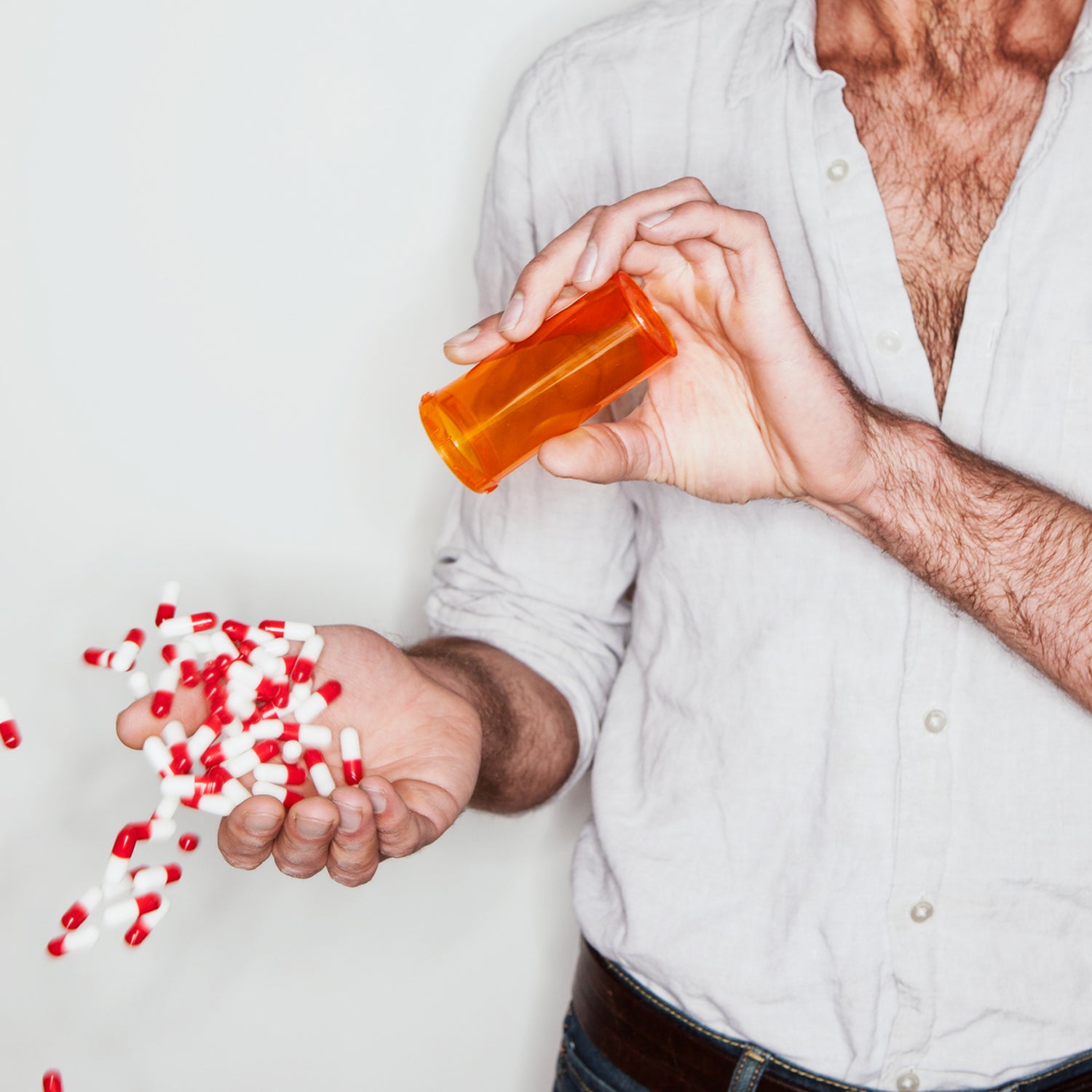While defending her title at the 2009 Ironman 70.3 World Championships in Clearwater, Florida, former Olympian and professional triathlete Joanna Zeiger reached out from her bike to grab a water bottle from a volunteerÔÇÖs outstretched arm. The handoff failed.┬áZeiger was pulled from her bike and┬ácrashed┬áto the pavement. The doctorÔÇÖs initial diagnosis: a fractured clavicle and possible broken ribs.┬á
Within days of her accident, Zeiger was in surgery. Her clavicle healed quickly, but her ribs required six operations over the next seven years.
From the start, Zeiger was prescribed narcoticsÔÇöPercocet and codeine at first, Vicodin and Dilaudid laterÔÇöto manage the pain. ÔÇťAt the time, I thought the drugs would be a finite issue┬ájust to deal with the postoperative pain,ÔÇŁ she recalls. But when it became clear that neither her pain nor her opioid prescription was short term, she decided┬áto avoid taking the medications.┬á
Zeiger is like┬ámany athletes, professional and amateur, who suffer from acute or chronic pain, and who as a result readily receive narcotic prescriptions. ÔÇťMy reluctance [about┬átaking the drugs] stemmed from knowing too many people who became addicted and reading stories about professional athletes who needed rehab for an addiction that began with an injury,ÔÇŁ she says.┬á
Statistics on use and abuse of prescription pain medications specifically among athletes are hard to come by, but a in the Journal of Adolescent Health reported that males who participate in sports have greater access to and are more likely to abuse prescription narcotics than their non-athlete counterparts. The NCAA reports that nearly a quarter of all college athletes have at one point received a prescription for narcotics. 
This is representative of the growing opioid epidemic in the U.S. In the general population, some 1.9 million Americans have a narcotics-related substance abuse disorder, . Almost from a narcotics overdose in 2014. 
This is representative of the growing opioid epidemic in our country. In the general population, some 1.9 million Americans have a narcotics-related substance abuse disorder.
In March, the Centers for Disease Control and Prevention issued new guidelines that dramatically cut how long patients can have access to this highly addictive class of drugs. The guidelines recommend prescribing lower doses and shortening availability to a maximum of seven days. 
The reality is that all athletes are one fall, twist, or tweak away from landing their own opioid prescription. In the wake of our countryÔÇÖs pain pill epidemic and the CDCÔÇÖs new guidelines, many physicians are beginning to think differently┬áabout this class of drugs.┬áMatthew Sedgley, a doctor at MedStar Sports Medicine in Westminster, Maryland, who often works with runners, triathletes, and bicyclists, is sympathetic to athletesÔÇÖ pain. ÔÇťI get it,ÔÇŁ he says, ÔÇťand sometimes short-term narcotics are warranted. But weÔÇÖve got an epidemic, and IÔÇÖm not adding to that.ÔÇŁ At this yearÔÇÖs meeting of the American Medical Society for Sports Medicine, Sedgley learned┬áthat despite representing only four percent of the worldÔÇÖs population, the United States uses 80 percent of all the narcotics in the world.
Sedgley hasnÔÇÖt prescribed a narcotic in the past four months┬áand will consider the drug class only for acute, short-term cases.┬áHe instead attempts to help injured athletes┬áwith alternative approaches that donÔÇÖt involve narcotics, like working closely with a pain management specialist, physical therapist, or acupuncturist.
This was ZeigerÔÇÖs approach. She tried nerve blocks, cortisone shots, physical therapy, and acupuncture, but ultimately, movement helped the most.┬áSwimming and cycling, Zeiger found, exacerbated her pain, but running (and walking, when running was too painful)┬áoffered some relief.┬áSedgley says pain relief via movement is not uncommon, because athletes tend┬áto get stiff and achy when sedentary.
Research is emerging to support additional alternatives to narcotics. A recent found that meditation can provide pain relief via a non-opioid pathway to the brain.┬áWen Chen, program director of the NIHÔÇÖs Division of Extramural Research, says┬áthey believe mediation can effectively treat chronic pain. Such is the experience of Scott Weiss, clinical director of┬áBodhizone┬áPhysical Therapy and┬áWellness in New York City, who┬áhas┬áworked with elite and amateur athletes for years and regularly prescribes meditation as an┬áalternative pain treatment. Weiss says that half of the injured athletes he sees┬áuse meditationÔÇöof those, 80 percent report reduced pain. One of his regular meditation clients is┬á2012 Olympic fencer Daryl Homer, who first approached Weiss┬áin 2014 for relief from a sports hernia. ÔÇťPeople often find meditation hard to swallow, but with the right instructor, they can start finding relief in just one session,ÔÇŁ Weiss claims.┬á
Athlete and practitioner buy-in to alternatives is growing. Data from the shows a slight increase in most forms of complementary medicine over . Anecdotally, trainers and coaches seem to be reaching for nontraditional solutions sooner, says Jessica Sleight, an acupuncturist for Eastern Washington University.
Weiss has also begun advocating┬áfor marijuana as a step-down from opioids, something Baltimore Ravens offensive tackle Eugene Monroe is campaigning for within the NFL.┬áÔÇťResearch shows that cannabinoids are a safer, less addictive alternative to opioids,ÔÇŁ says┬áMonroe.┬áBut because marijuana is on the NFLÔÇÖs banned substance list, Monroe says he and his fellow players have no option but to use opioids for pain.
Zeiger┬áhopes the worst pain is now behind her. ÔÇťIt has been a very long road,ÔÇŁ she admits, ÔÇťand I consider myself fortunate not to have experienced any dependence on narcotics. Not everyone is so lucky.ÔÇŁ


